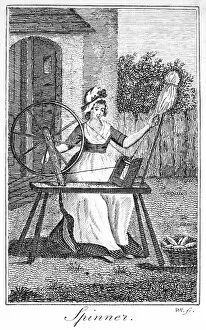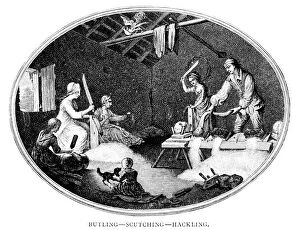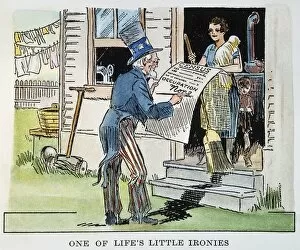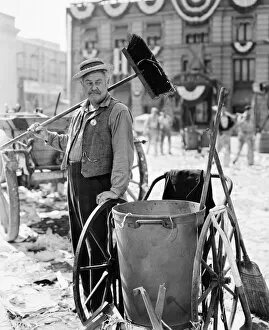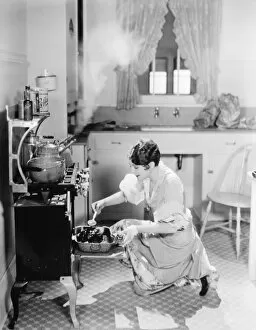Home Industry Collection (#3)
"Unveiling the Legacy of Home Industry
All Professionally Made to Order for Quick Shipping
"Unveiling the Legacy of Home Industry: From American Gothic to Cottage Crafts" Step back in time and witness the captivating tales woven by generations through the lens of home industry. In 1942, Gordon Parks immortalized Ella Watson, a US Government Chairwoman, in his iconic photograph "American Gothic. " This powerful image stands as a testament to the resilience and strength found within our homes. Travel further back to the 17th century, where woodcuts from Comenius Orbis depict shoemakers diligently crafting footwear. Their skilled hands shaped not only shoes but also their own destinies, showcasing how home industry empowered individuals throughout history. In colonial America, cloth makers engaged in carding, spinning, and weaving woolen fabrics. The rhythmic dance of looms echoed through households as families transformed raw materials into garments that would warm their loved ones during chilly winters. The early 20th century witnessed both triumphs and struggles within home industries. Lewis Hine's poignant photographs capture moments frozen in time - a mother and father alongside their nine-year-old daughter immersed in productive labor; another family creating delicate flowers amidst unsanitary conditions. These images remind us of the complexities faced by those who relied on home-based work for survival. Venturing into New York City's sweatshops of yesteryears reveals necktie workshops nestled within crowded tenements on Division Street circa 1890. Here, dreams clashed with reality as workers strived for economic stability while enduring harsh working conditions. Yet amid these challenges emerged stories brimming with hope and creativity. Mushroom growers nurtured nature's bounty right at their doorstep – an embodiment of self-sufficiency rooted in home industry traditions. Textile cottage industries thrived during colonial times when carding wheels spun tales of craftsmanship passed down from one generation to another. Wood engravings from the early 19th century offer glimpses into this world where flax or wool transformed into cloth, embodying the spirit of self-reliance.

